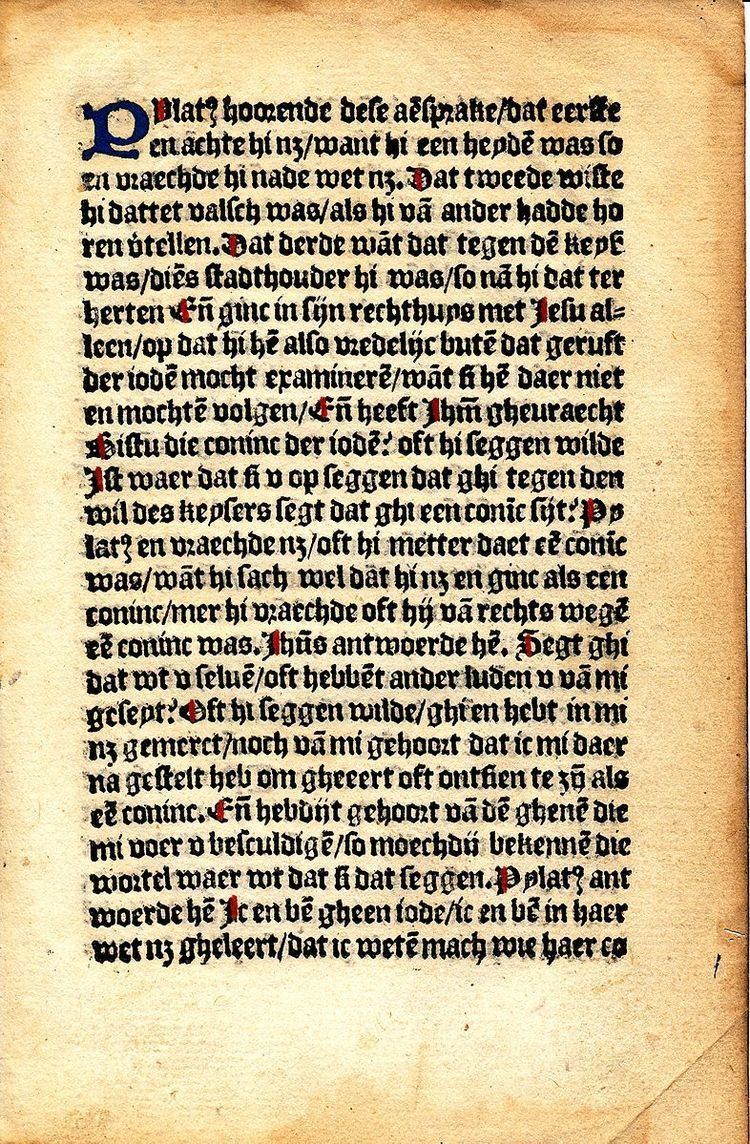 | ||
Fasciculus mirre is a Germanic devotional book that was popular in the Low Countries during the first half of the sixteenth century. The text contains meditations on the life of Jesus Christ, most notably the Passion. Its Latin title (meaning "a bundle of myrrh" in English) comes from the first chapter of Canticum Canticorum: "Fasciculus Myrrhae dilectus meus mihi inter ubera mea commorabituris." Fasciculus mirre is often sometimes spelled as Fasciculus myrre, or myrrhæ, and can also be referred to by an English title, On the Life of Christ. The earliest known printed version dates to approximately 1500 CE in the Dutch city of Delft.
Contents
Background
Fasciculus mirre was first compiled by an anonymous Franciscan in the German city of Cologne, although the exact date of its original composition is unknown. During a time when Europe was on the eve of the Protestant Reformation, the pocket-sized text was convenient for those who could carry it around with them everywhere, reading it throughout the day and embracing the spiritual power it was believed to have embodied.
Following the expansion of both the printing press and the Reformation during the first half of the sixteenth century, various editions of the book were widely circulated throughout the Low Countries while the region was under the control of Charles V and the Holy Roman Empire. Between 1518 and 1550, twenty separate editions of Fasciculus mirre were printed in the bustling, mercantile hub of Antwerp, a city which was becoming an epicenter of commercial printing as well as a popular safe-haven for non-Catholic religious movements such as Calvinism and Lutheranism.
Dutch Printed Editions, 1500-1578
English Jesuit Version
In 1632-33, the book was translated into English by the Jesuit priest John Falconer. Falconer published it as Fasciculus myrrhæ. Or a briefe treatise of our Lord and Sauiours passion. Written by the R. Fa. I. F. of the Society of Iesus.
Modern Significance
Today, Fasciculus mirre continues to be a curious obscurity in the vast realm of devotional literature and incunabula. Fully intact copies are extremely rare, but can be found through the Universal Short Title Catalogue database. Typically, only leaves (single pages with text on each side) can be found within the United States, either in museums or in University Libraries of Special Collections, as such leaves are prized among collectors of rare medieval manuscripts, incunabula, and post-incunabula.
